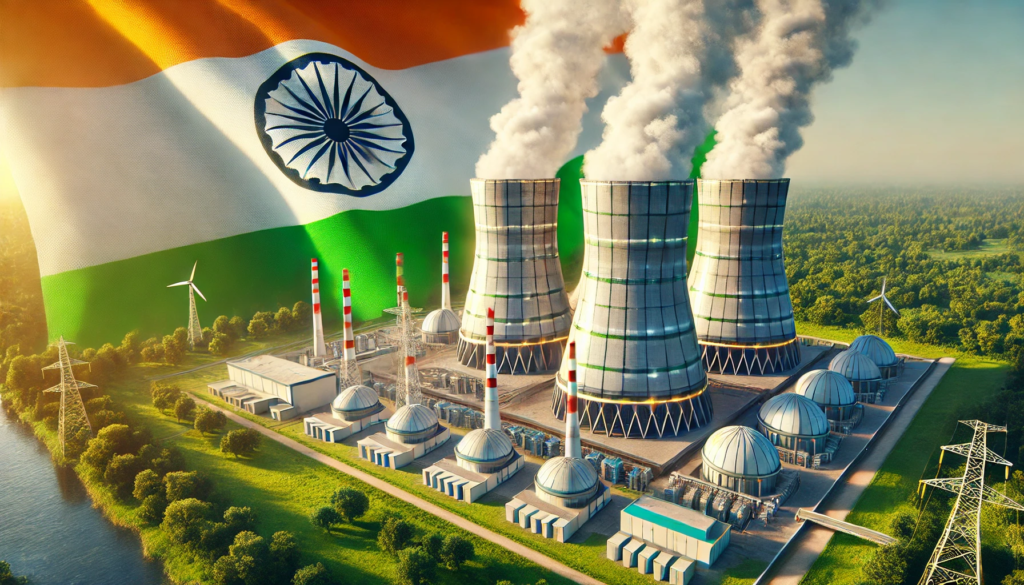With sophisticated technology and private sector involvement, the Union Budget 2025–2026 propels a revolutionary push for nuclear energy in India, with a target of 100 GW by 2047 for a sustainable future.
The Union Budget 2025-26 has offered a strong foundation for India’s long-term energy transformation, with a major emphasis on nuclear power development. Recognizing nuclear energy as one of the pillars in achieving energy security, sustainability, and economic development, the government has set an ambitious target of 100 GW nuclear power capacity by 2047. This will align with the broader Viksit Bharat mission, ensuring lesser fossil fuel dependence while meeting the growing energy needs of the country. The government is taking strategic policy interventions in this direction, strengthening indigenous nuclear technology, and encouraging public-private partnerships.
Support for Innovation and R&D
One of the main focuses of the budget is the launch of the Nuclear Energy Mission for Viksit Bharat, which will have a focus on R&D in advanced nuclear technologies. The government has sanctioned ₹20,000 crore for the purpose, expecting to deploy five indigenous SMRs by 2033. With their modular and scalable design, the reactors can be effectively costed and provide an energy solution with minimal land and infrastructure constraints. Besides, the Atomic Energy Act and the Civil Liability for Nuclear Damage Act have been proposed for modification for encouraging more private sector participation into nuclear power initiatives with more definite timeline deployments and quicker investment flows.
Bharat Small Reactors a revolutionary initiative
The proposals for the budget include Bharat Small Reactors, a new program focused on utilizing 220 MW Pressurized Heavy Water Reactors. It is a modified version of the already known safety-and-efficiency reactors with less land usage, deployable nearer to industries such as steel, aluminium, and metals, furthering decarbonization. This includes a collaborative framework where private players will provide land, cooling water, and capital, and Nuclear Power Corporation of India Limited will oversee the design, quality assurance, and operations, thus ensuring safety and compliance within the existing legal framework.
India’s Nuclear Vision
The country’s nuclear energy expansion is aligned with its commitment to achieving 500 GW of non-fossil fuel-based energy generation by 2030, which was pledged at the COP26 Summit in Glasgow in 2021. Under this vision, the Department of Atomic Energy (DAE) is working on cutting-edge high temperature gas-cooled reactors for hydrogen co-generation and molten salt reactors that will use India’s vast thorium resources. The Bhabha Atomic Research Centre (BARC) is currently working on Small Modular Reactors (SMRs) that can be used to convert retiring coal-based power plants and meet the energy requirements in remote areas.
Governmental Efforts to Expand India’s Nuclear Potential
To fulfill the rising energy requirement, the government has also targeted increasing nuclear power capacity from 8,180 MW to 22,480 MW by 2031-32 with ten new reactors currently under construction across Gujarat, Rajasthan, Tamil Nadu, Haryana, Karnataka, and Madhya Pradesh. Another major development has been that India has given in-principle sanction to setting up a 6x 1208 MW nuclear power plant to be established at Kovvada in Andhra Pradesh. The new deal New Delhi has signed with the USA regarding this project indicates that such steps taken by it reflect India’s commitment to use the potential of nuclear energy for both domestic and global energy security. There was also a breakthrough in finding fresh uranium deposits recently at India’s oldest uranium site, Jaduguda Mines. This will provide more than 50 years for the mine life, which assures a continuous fuel supply for the swelling nuclear fleet.
The increasing importance of nuclear energy in the energy landscape of India will necessitate safety and sustainability. With all international guidelines followed, nuclear plants in India ensure that levels of radiation stay at a point below the set international standards. It is testimony to the promise made by this nation to give energy that will be safe, clean, and reliable for posterity.

